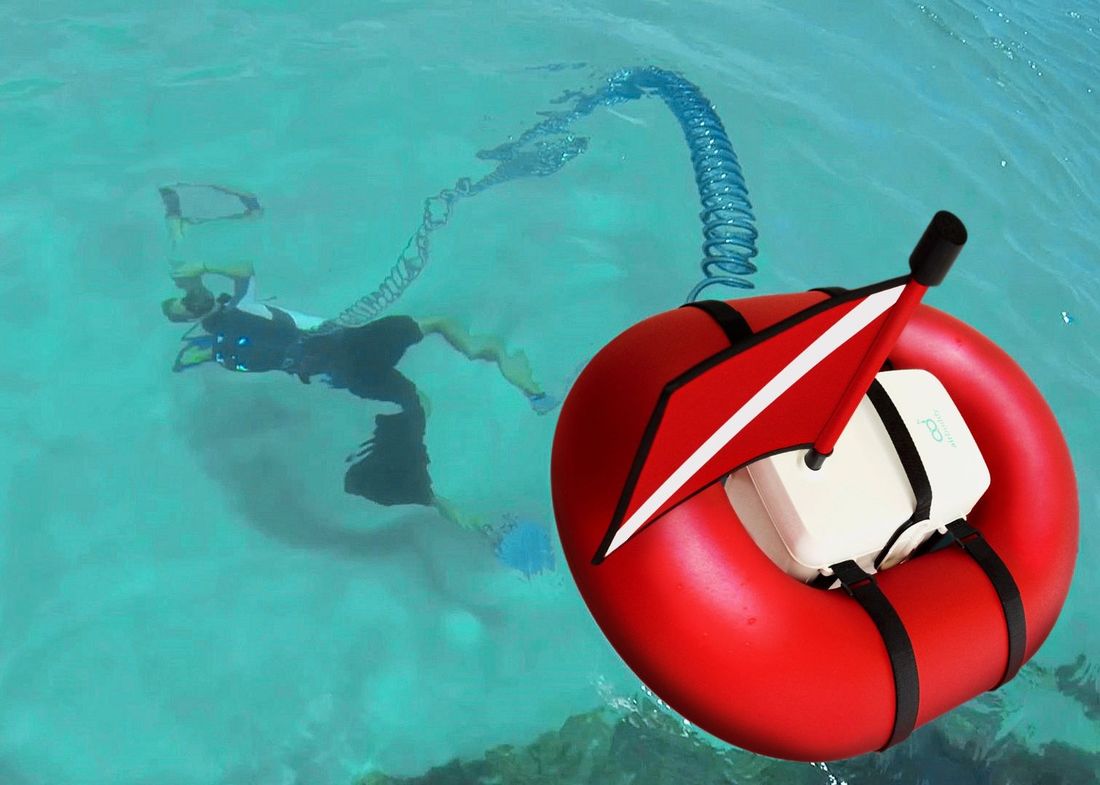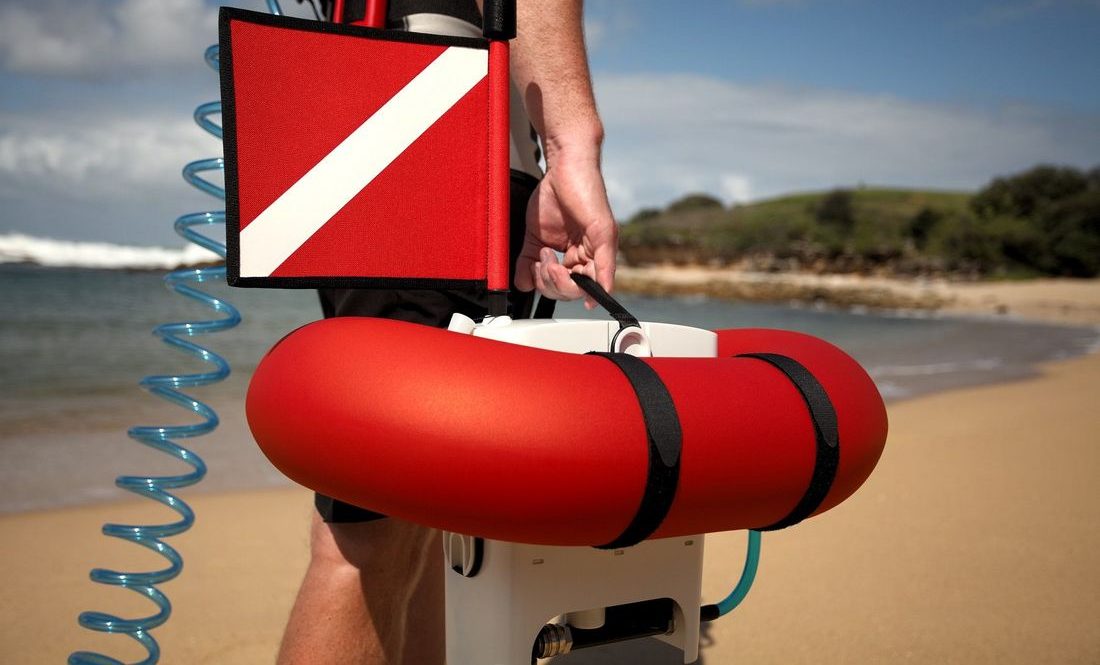Scuba diving is an excellent way to explore the ocean depths. However, it’s a complex activity which requires users to don cumbersome equipment and complete extensive certifications. The makers of AirBuddy are looking to change that by creating the smallest and lightest diving gear in the world.
Unlike traditional scuba diving solutions, the device doesn’t require any air refills, rentals, complicated logistics, or special gear. It works by using three core components: a battery-powered air compressor, a supply hose, and regulator (mouthpiece).
The device pressurizes surface air and then delivers it to the diver through a supply hose. The built-in batteries have a life of 45 minutes while the diving system enables one diver to go down to 12 meters, or six meters for two divers.
“We created AirBuddy to provide an easy alternative for self-guided shallow water diving. We aren’t trying to replace SCUBA, it’s still great for deep dives and cave diving. We wanted to make diving just as convenient as other sports; a sport where you just grab your gear and go. It was created to eliminate all the hassle, time and expense that comes along with preparing for SCUBA diving and it’s perfect for reef diving which is where countless species of sea life can be found.” says AirBuddy’s inventor, Jan Kadlec.
To improve safety and prevent capsizing, AirBuddy has a low center of gravity with heavy components on the bottom. It has protection against capsizing to about an 110° tilt.
Despite its power, the entire system weighs 9.5kg (21lbs) which is 60%-70% lighter than traditional dive gear. It’s designed to go where the user goes, and is plane friendly and designed to fit in the user’s travel bag. It’s sized 16.0 x 21.3 x 12.4 inches and uses a LiFePO4, 12VDC battery.

Going back to the 6-12 meter range, this enables users to explore the ocean depths while still not having to worry about decompression sickness – an important aspect should an emergency occur. There also are two backup systems to ensure user safety.
Backup system #1 is a 15L compressed emergency air contained in the red float/reservoir, which provides about 4-5 breaths at 12m depth to about 12-15 breaths when closer to the surface at about 1m depth. Backup system #2 which can be purchased optionally is the 100% redundant egressor/pony bottle which comes in a variety of sizes.
In terms of costs of operation, those are limited to the cost of electricity used to charge AirBuddy. It is approximately $0.1 per recharge plus occasional maintenance (every hundred dives). The battery is rated to retain more than 80% of its capacity after 1,500 cycles.
So far the makers of AirBuddy have raised over $213,000 via crowdfunding with an estimated shipping date of June 2018. Pricing for the device starts at AU $1,299 which is 44% off the retail price. The Early Bird kit includes an AirBuddy, lithium battery, battery charger, single diver hose, harness, and a regulator.

